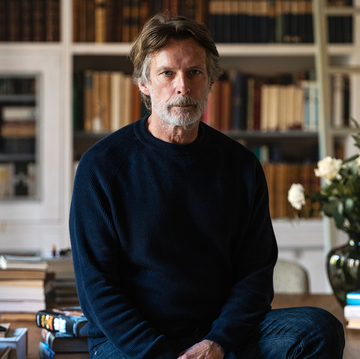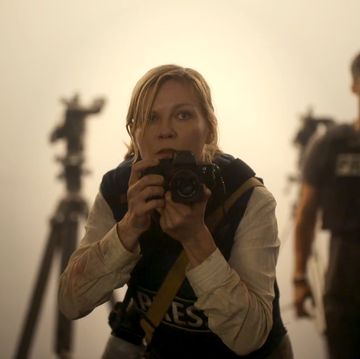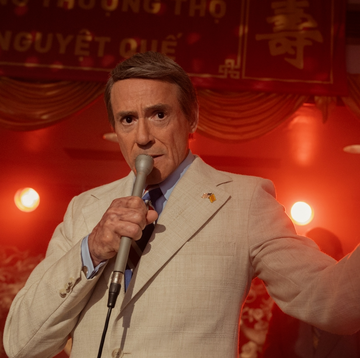A few years ago, when Wilco's Jeff Tweedy did a live cover of the Black Eyed Peas' "I Gotta Feeling," he played it for laughs, and he got them."They have like a million lyrics," he told the crowd, and though he performed the song, solo, with an acoustic guitar, he might as well have been reading it, the way squares used to read rock and roll lyrics on television back in the fifties, milking the yucks from every "A wop bop a loo bop a wop bam boom." He didn't leave out a single word, and at every "Drank!" or "L'chaim!," his audience cracked up, as if the song were beneath them, self-evidently insipid.
It was the last time a rock star got away with thinking he was cooler than the people who make pop music.
Yesterday, Ryan Adams released 1989, his exacting song-by-song cover album of Taylor Swift's record of the same name, and it was both a triumph of what used to be called "indie rock" on the level of music-making and an unmistakable admission of defeat on the level of cool. Indeed, it served to demonstrate that the assumptions underlying Jeff Tweedy's ironic burlesque of Fergie and will.i.am have been, in the space of approximately five years, completely overturned.
Adams is not slumming on 1989. He is not holding himself out as superior to the songs he's singing, and then singing them anyway. He's not even doing what indie-rockers have been doing on tribute albums since Sonic Youth claimed Karen Carpenter as a kindred spirit on If I Were A Carpenter, twenty years ago – he's not rehabbing a misunderstood reputation, or giving rock fans permission to like music they secretly love. There are no rock fans anymore, at least as a commercially-viable demographic, and anyone who cares about music doesn't need Ryan Adams' permission to like Taylor Swift. Everybody likes Taylor Swift, and what makes Adams' 1989 moving is its combination of of deference and defiance – the artistic assertion it manages in the act of surrender.
Simply put, Ryan Adams needs Taylor Swift a lot more than Taylor Swift needs him, and seems to know it. This is not to say that Swift does not, in turn, need Adams; she is the biggest pop star on earth because she needs to make friends with everyone on earth, and Adams, by this time, has surely earned himself a place on her Christmas-card list. But she also needs to win, and always does; and Ryan Adams' 1989, in its very excellence, is as much a victory for her as for him – a tribute album in the Roman sense of the word.
He should have been her, after all. Maybe not the biggest pop star in the world, but at least the biggest singer-songwriter who ever occupied the juncture between indie rock and alt-country, a rare niche artist who, by virtue of talent and ego, became a household name. That he didn't – that he has become a survivor instead, the musical equivalent of a mid-list novelist, esteemed but at the mercy of the uncertainties inherent to his trade – had to do with his own demons and profligacy, musical and otherwise, but also with the contraction and fragmentation of the music business, post-Internet. He didn't just make music; he made a lot of music, for an ever-dwindling audience, a niche artist left, at last, to his niche. In 2001, he released "New York, New York," a self-styled anthem that caught the national ear in the wake of 9/11; then he waited 14 years to catch it again, this time with a record that opens with another self-styled anthem to New York City, written and previously performed by Taylor Swift.
Is Swift's "Welcome to New York" a better New York City anthem than Adams' "New York, New York"? Maybe; maybe not. It has something going for it, however, that no mere Ryan Adams song can ever have: It's about Taylor Swift. It's about her move to New York City, after her years in Nashville; it's about her transformation into a full-fledged pop star after serving what turned out to be an apprenticeship as Nashville Barbie; it's both a declaration of independence and an avowal of artistic intent, and so it's about our knowledge of where she has been and where she is going – in another words, it's about her celebrity. But it's also about something else, which is being young. As a songwriter, she is somehow able to make her singular celebrity representative to her young fans, and to make her travails with her famous friends and boyfriends sound like everybody else's.
Ryan Adams can do a lot with his songs, but he can't quite do that, and so it's interesting to see what he does on 1989 with a collection of songs so specific to the experience of youth: He makes them about the experience of aging. He does this not by changing them but rather by respecting them; from "Welcome to New York" to "Clean," he plays them straight, with the lyrics adjusted only for gender considerations and without even a hint of irony. But he also plays them in an array of classic-rock styles, with echoes of Bruce, Bono, Tom Petty, and, God help us, the Climax Blues Band. He doesn't sound old (he is, throughout, in excellent voice) but the music sure does, thanks, in part, to Taylor Swift herself. On many of the songs, Adams settles on the kind of ringing acoustic arrangements she has long since discarded in favor of beats manufactured in Scandinavian music laboratories; in doing so – in finding echoes of Swift, in Swift – he has excavated the bones of her songwriting, and also the essence of both her vulnerability and his own. She is vulnerable because she is young, and now famous in the extreme; he is vulnerable because his youth is fleeing him, and the kind of music he plays isn't cool anymore. But they're playing the same song, even the same songs, from the same album, and the kids like it, and him, more than they have in years.
This article was orignally published on Esquire.com
***
MORE CULTURE:
A Comprehensive Analysis Of Why The World Has Fallen For Taylor Swift
How 'The Face' Redefined Youth Culture
The World According To Bill Murray
***













